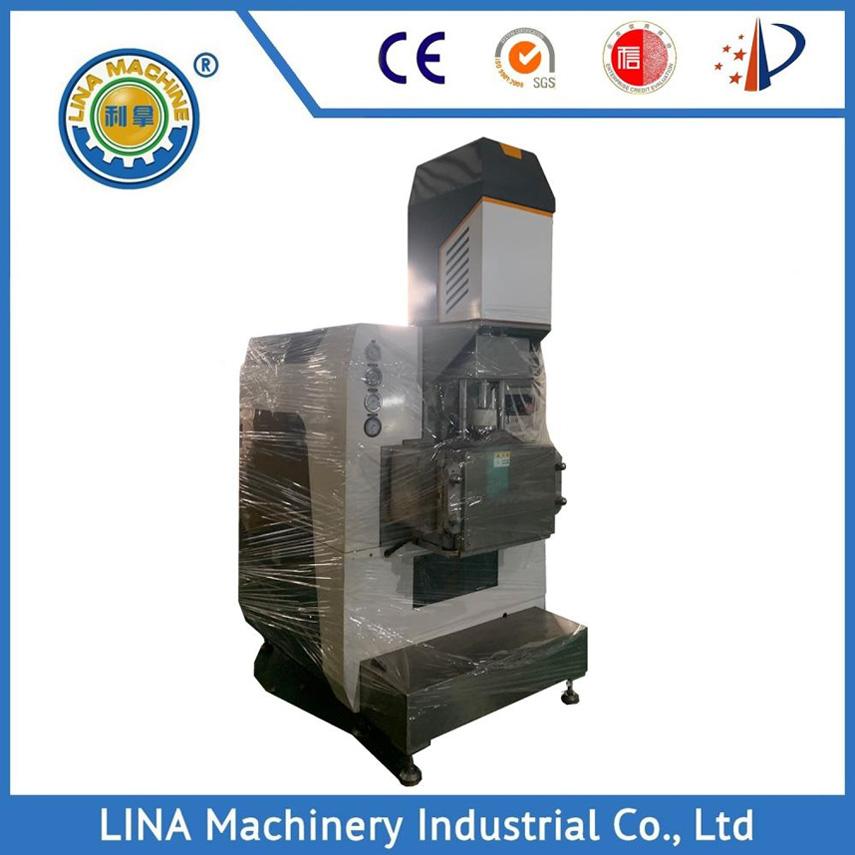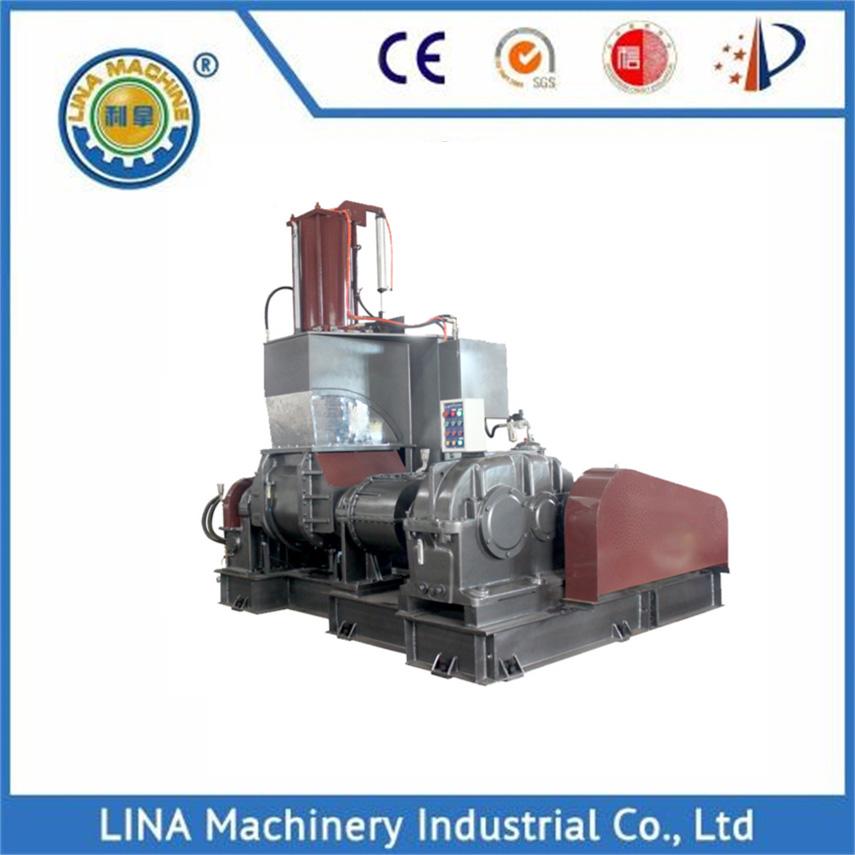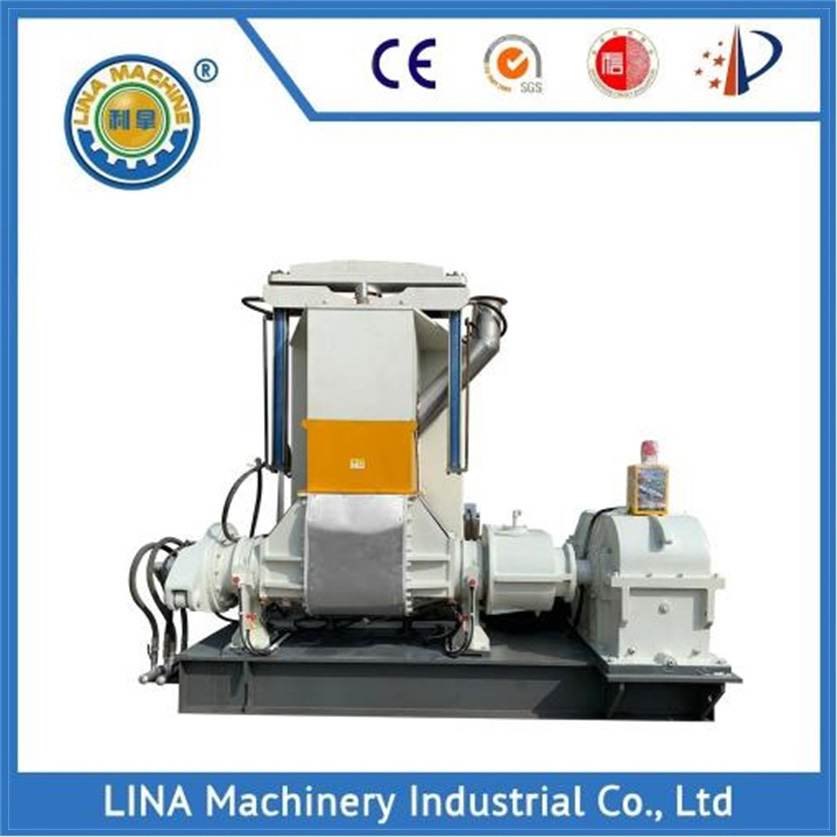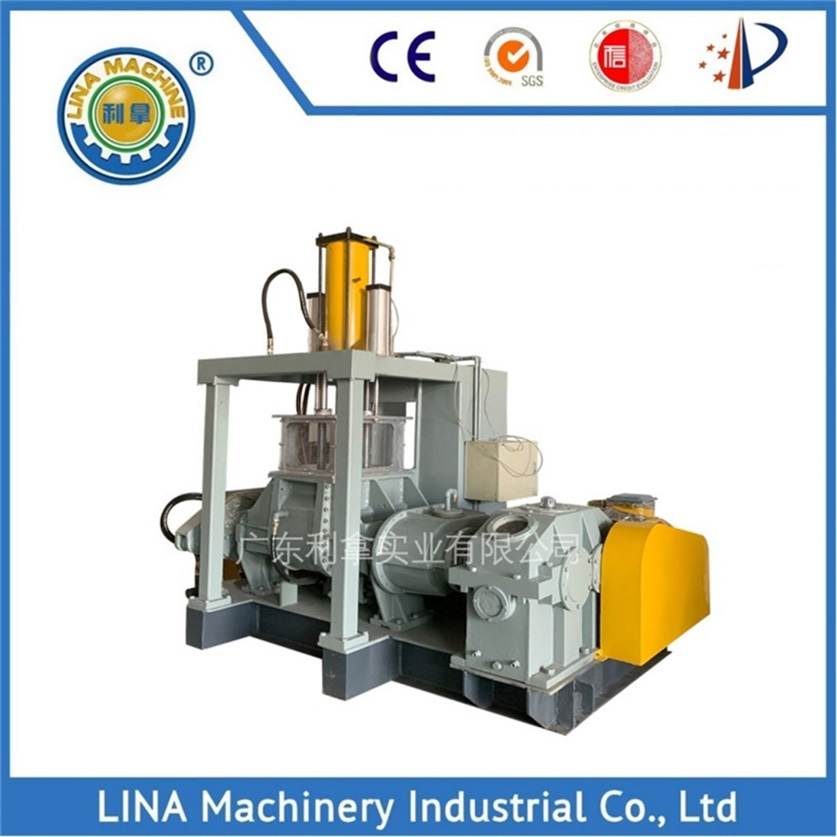




Functionality:
The internal mixer operates on the principle of mechanical shearing and blending to thoroughly mix multiple ingredients. Its main components include a mixing chamber, rotors, and blades. The raw materials, such as rubber, plastic, fillers, and additives, are fed into the chamber. As the rotors rotate at high speeds, the blades continuously knead and shear the materials, facilitating efficient dispersion and distribution. This process ensures uniformity in the mixture, leading to enhanced product quality.
Key Features:
High Mixing Efficiency: The internal mixer achieves rapid and thorough mixing, reducing processing times and enhancing productivity.
Precise Temperature Control: Equipped with advanced temperature control systems, it maintains optimal mixing temperatures, preventing material degradation and ensuring consistency.
Customizable Configurations: Internal mixer come in various sizes and configurations to accommodate diverse production requirements. Options include different chamber volumes, rotor designs, and control systems.
User-friendly Interface: Intuitive controls and interfaces simplify operation and allow for precise adjustments, enabling operators to optimize mixing parameters effectively.
Safety Mechanisms: Built-in safety features ensure operator protection and equipment integrity, including emergency stop functions, safety interlocks, and overload protection.
Applications:
Rubber Industry: Internal mixer are widely used in the production of rubber compounds for tires, automotive parts, conveyor belts, and industrial seals. They facilitate the blending of rubber polymers with fillers, plasticizers, and curing agents to achieve desired properties such as elasticity, durability, and resistance to heat and chemicals.
Plastics Manufacturing: In the plastics industry, internal mixer are employed to homogenize polymer blends and additives for extrusion, injection molding, and other processes. They enable precise control over material properties, improving product consistency and performance.
Polymer Research: Internal mixer serve as valuable tools in polymer research and development laboratories, allowing scientists to study material behavior, optimize formulations, and innovate new products.
Composite Materials: Industries producing composite materials utilize internal mixer to blend fibers, resins, and additives, ensuring uniform distribution and enhancing the mechanical properties of the final products.

The internal mixer is a versatile and indispensable asset in various manufacturing processes, offering efficient mixing, precise control, and consistent quality. With its broad range of applications and customizable features, it serves as a cornerstone of production in industries ranging from rubber and plastics to research and development. By investing in high-quality internal mixer, manufacturers can achieve superior results, streamline operations, and stay competitive in today's dynamic market.
Internal mixer consist of a sealed chamber, kind of like a figure-eight on its side.
Inside this chamber are two rotors with specially designed wings or protrusions on their surfaces.
These rotors can be intermeshing, where their wings overlap, or tangential, where they rotate close to each other without directly touching.
A powerful motor drives the rotors, and a ram applies pressure to keep everything sealed.
The entire chamber, including the rotors and discharge door, can be heated or cooled to control the mixing process.
The Mixing Magic:
Feeding Time: The materials to be mixed, like rubber and additives, are loaded into the sealed chamber through a feeding port.
Rotor Rumble: The rotors start whirling, either at the same speed (intermeshing) or different speeds (tangential). This rotation creates a powerful shearing and folding action on the materials.
Squeeze and Fold: As the materials get caught between the rotors and the chamber walls, they get squeezed and stretched. This breaks down any clumps and exposes new material surfaces for better mixing.
Circulation is Key: The design of the chamber and rotors helps circulate the materials throughout the mix. This ensures even distribution of all the ingredients.
Temperature Matters: The controlled heating or cooling of the chamber plays a crucial role. It helps achieve the desired material properties and prevents the mix from overheating or burning.
Discharge Duty: Once the mixing cycle is complete, the ram retracts, and a door opens, allowing the mixed material to be discharged.
the internal mixer's working principle relies on the combined effect of shearing, folding, and circulation within a closed and temperature-controlled environment. This intensive mixing action leads to a homogenous and well-distributed final product.
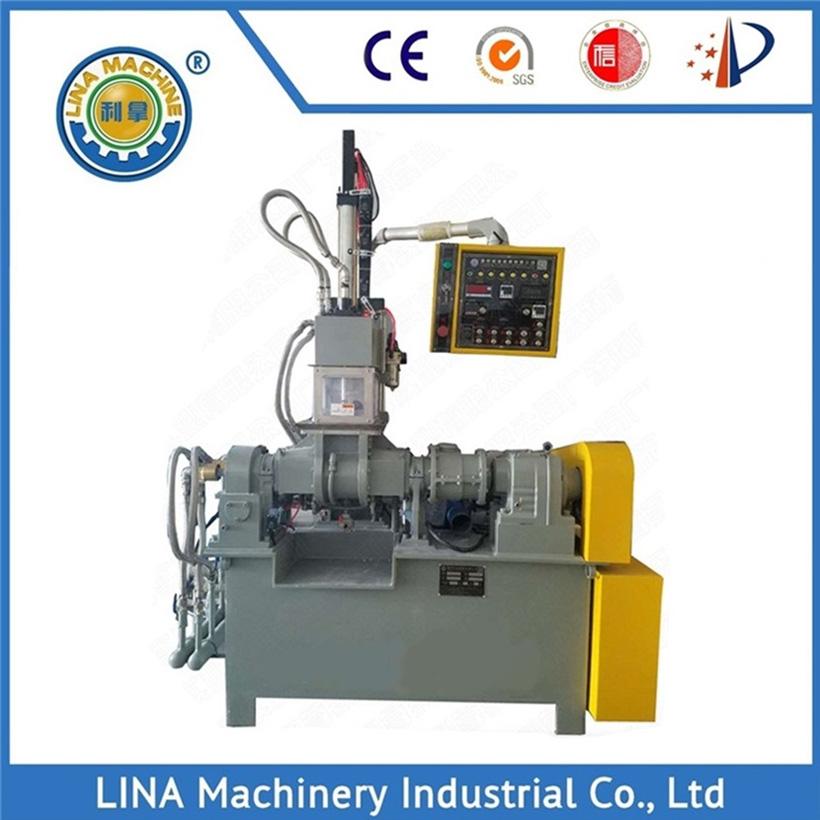




3 Liters Internal Mixer
This Internal Mixer can not only mix powder materials efficiently, but also can prevent dust flying and pollution in the workshop, especially suit for powder, liquid, sheet like rubber, plastic, ceram
TAG: Rubber Internal Mixer,Internal Mixer,Internal Mixer Working Principle
Description
Internal Mixer is a crucial piece of equipment used in various industries, particularly in the manufacturing of rubber and plastic compounds. It plays a pivotal role in blending raw materials to create homogeneous mixtures with consistent properties. This comprehensive product description provides an overview of the internal mixer's functionality, features, and applications. Functionality:
The internal mixer operates on the principle of mechanical shearing and blending to thoroughly mix multiple ingredients. Its main components include a mixing chamber, rotors, and blades. The raw materials, such as rubber, plastic, fillers, and additives, are fed into the chamber. As the rotors rotate at high speeds, the blades continuously knead and shear the materials, facilitating efficient dispersion and distribution. This process ensures uniformity in the mixture, leading to enhanced product quality.
|
Item |
Specification |
remarks |
| Type |
Lab Test Type |
|
|
Mixing Capacity |
3 liters |
|
|
Production Yield |
2.5-4.0 KG per time |
Subject to the proportion of material and dispersion requirements. |
|
Main Motor Power |
5.5 KW |
|
|
Flipping Method |
Hydraulic type |
|
|
Flipping Angle |
110° |
|
|
Temperature Control |
Heating or/and cooling |
Electric/oil/steam heating and circulating water cooling. |
|
Weight |
About 900 KG |
|
|
Dimensions |
About 1600*900*2100 mm |
|
Key Features:
High Mixing Efficiency: The internal mixer achieves rapid and thorough mixing, reducing processing times and enhancing productivity.
Precise Temperature Control: Equipped with advanced temperature control systems, it maintains optimal mixing temperatures, preventing material degradation and ensuring consistency.
Customizable Configurations: Internal mixer come in various sizes and configurations to accommodate diverse production requirements. Options include different chamber volumes, rotor designs, and control systems.
User-friendly Interface: Intuitive controls and interfaces simplify operation and allow for precise adjustments, enabling operators to optimize mixing parameters effectively.
Safety Mechanisms: Built-in safety features ensure operator protection and equipment integrity, including emergency stop functions, safety interlocks, and overload protection.
Applications:
Rubber Industry: Internal mixer are widely used in the production of rubber compounds for tires, automotive parts, conveyor belts, and industrial seals. They facilitate the blending of rubber polymers with fillers, plasticizers, and curing agents to achieve desired properties such as elasticity, durability, and resistance to heat and chemicals.
Plastics Manufacturing: In the plastics industry, internal mixer are employed to homogenize polymer blends and additives for extrusion, injection molding, and other processes. They enable precise control over material properties, improving product consistency and performance.
Polymer Research: Internal mixer serve as valuable tools in polymer research and development laboratories, allowing scientists to study material behavior, optimize formulations, and innovate new products.
Composite Materials: Industries producing composite materials utilize internal mixer to blend fibers, resins, and additives, ensuring uniform distribution and enhancing the mechanical properties of the final products.

The internal mixer is a versatile and indispensable asset in various manufacturing processes, offering efficient mixing, precise control, and consistent quality. With its broad range of applications and customizable features, it serves as a cornerstone of production in industries ranging from rubber and plastics to research and development. By investing in high-quality internal mixer, manufacturers can achieve superior results, streamline operations, and stay competitive in today's dynamic market.
Internal Mixer Working Principle
internal mixer is a workhorse in the world of material mixing, particularly for polymers like rubber. Here's a breakdown of how it works:Internal mixer consist of a sealed chamber, kind of like a figure-eight on its side.
Inside this chamber are two rotors with specially designed wings or protrusions on their surfaces.
These rotors can be intermeshing, where their wings overlap, or tangential, where they rotate close to each other without directly touching.
A powerful motor drives the rotors, and a ram applies pressure to keep everything sealed.
The entire chamber, including the rotors and discharge door, can be heated or cooled to control the mixing process.
The Mixing Magic:
Feeding Time: The materials to be mixed, like rubber and additives, are loaded into the sealed chamber through a feeding port.
Rotor Rumble: The rotors start whirling, either at the same speed (intermeshing) or different speeds (tangential). This rotation creates a powerful shearing and folding action on the materials.
Squeeze and Fold: As the materials get caught between the rotors and the chamber walls, they get squeezed and stretched. This breaks down any clumps and exposes new material surfaces for better mixing.
Circulation is Key: The design of the chamber and rotors helps circulate the materials throughout the mix. This ensures even distribution of all the ingredients.
Temperature Matters: The controlled heating or cooling of the chamber plays a crucial role. It helps achieve the desired material properties and prevents the mix from overheating or burning.
Discharge Duty: Once the mixing cycle is complete, the ram retracts, and a door opens, allowing the mixed material to be discharged.
the internal mixer's working principle relies on the combined effect of shearing, folding, and circulation within a closed and temperature-controlled environment. This intensive mixing action leads to a homogenous and well-distributed final product.


